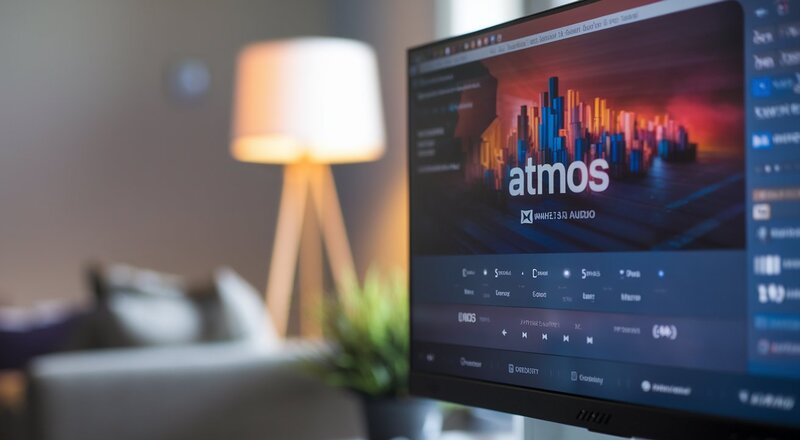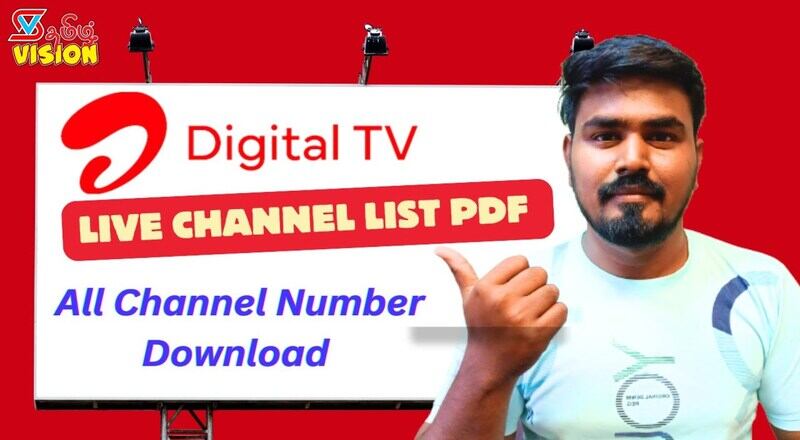Understanding the 1099 Expense Tracker
Definition and Purpose of an Expense Tracker
A 1099 expense tracker is a systematic tool designed for independent contractors and freelancers to manage and organize their business expenses. By comprehensively recording every transaction, you can have a clear picture of where your money is going, making it easier to prepare for tax season. An effective expense tracker goes beyond just listing expenditures; it categorizes expenses, tracks receipts, and helps with efficient financial management, allowing you to focus on growing your business rather than being bogged down by administrative tasks.
Read More: How We Designed A User-Friendly Free Printable Expense Tracker
Importance for Independent Contractors
As an independent contractor, the responsibility of managing finances falls squarely on your shoulders. This includes tracking income, expenses, and preparing for tax filings. Using a 1099 expense tracker is crucial because it not only helps you to monitor your financial health but also ensures compliance with tax regulations. Accurate tracking is essential for maximizing deductions during tax season, ultimately lowering your taxable income. Without proper expense tracking, you run the risk of overlooking potential deductions that could save you significant money in taxes.
Key Features to Include in the Tracker
When designing your 1099 expense tracker, certain features are essential to enhance its functionality:
Categorization of Expenses: Set up different categories for your expenses, such as supplies, travel, and marketing. This organization helps streamline the reporting process during tax time.
- Date and Description Fields: Ensure each entry includes a date and a brief description of the expense. This level of detail helps in understanding your spending habits.
- Receipt Management: Incorporating a way to attach digital receipts to your expenses can simplify the documentation process immensely.
- Automated Calculations: Features like summing totals and calculating category-specific deductibles can save you time and reduce the risk of human error.
- Compatibility with Tax Forms: Your tracker should align with IRS requirements, making it easier to extract the necessary information for filling out taxation forms such as Schedule C.
Steps to Create Your 1099 Expense Tracker
Choosing the Right Platform (Excel, Google Sheets)
You can choose between various platforms to create your 1099 expense tracker, with Microsoft Excel and Google Sheets being two of the most popular choices. Excel offers more advanced features for data analysis, while Google Sheets is cloud-based, which means you can access it from any device and collaborate in real time with your accountant or business partners. Choose the platform that aligns with your comfort level and needs.
Setting Up Categories for Expenses
Creating categories within your tracker allows you to sort expenses more effectively. Common categories include:
Travel: for airfare, accommodation, and transportation costs.
- Office Supplies: for any materials needed for your work.
- Marketing: for promotional efforts and advertising.
- Utilities: such as your internet and phone expenses.
Establishing these categories at the outset will make it easier to input data accurately and streamline the process come tax time.
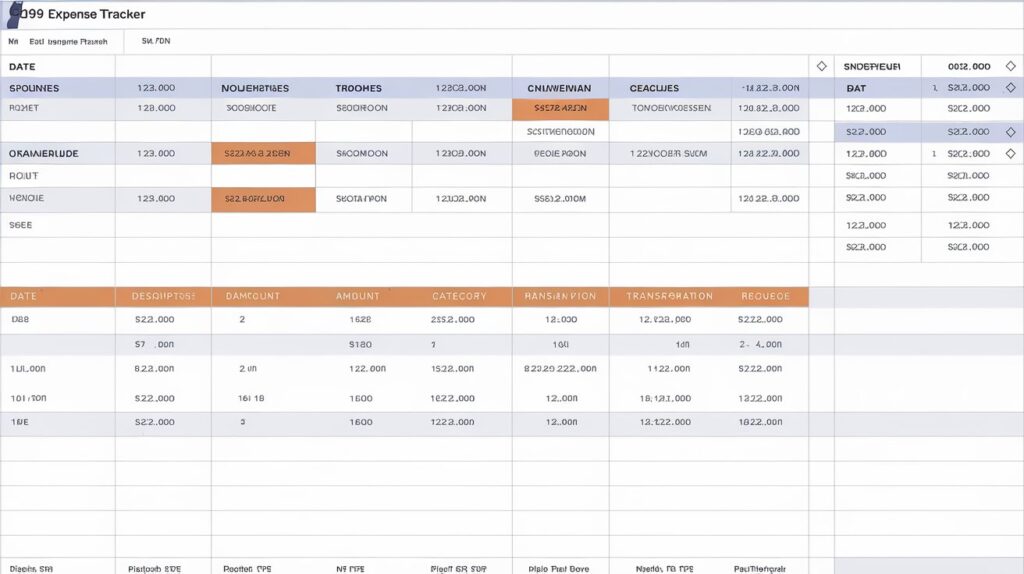
Inputting and Formatting Data Effectively
When inputting data into your tracker, consistency is key. Make sure you use the same format for entries.
For example, if you start by using MM/DD/YYYY for dates, stick with that format. Proper formatting enhances readability and will help avoid confusion.
Additionally, consider utilizing dropdown menus for category selections to reduce input errors.
Common Business 1099 Expenses to Tracker
Categories of Common 1099 Expenses
Common 1099 expenses you should track can include:
Vehicle Expenses: If you’re using your car for business, keep tabs on repairs, insurance, and gas.
- Meals and Entertainment: Document meetings with clients or business associates over meals.
- Home Office Costs: Keep track of what you spend on setting up a comfortable and productive workspace at home.
- Continuing Education: Any training or courses undertaken to enhance your skills may also qualify for deductions.
Personal vs. Business Expense Deductions
Understanding the difference between personal and business expenses is crucial. Only expenses that are “ordinary and necessary” for your business can be deducted. If you use something (like your vehicle) for both personal and business purposes, only the business-use percentage is deductible.
For example, if you drive for work 60% of the time, you can only deduct 60% of related vehicle expenses.
Importance of Documenting Mixed-Use Expenses
Documentation is vital for mixed-use expenses. Keeping accurate records can protect you in case of an IRS audit. By clearly recording the business use proportion, you ensure that you can claim the appropriate amount of deduction.
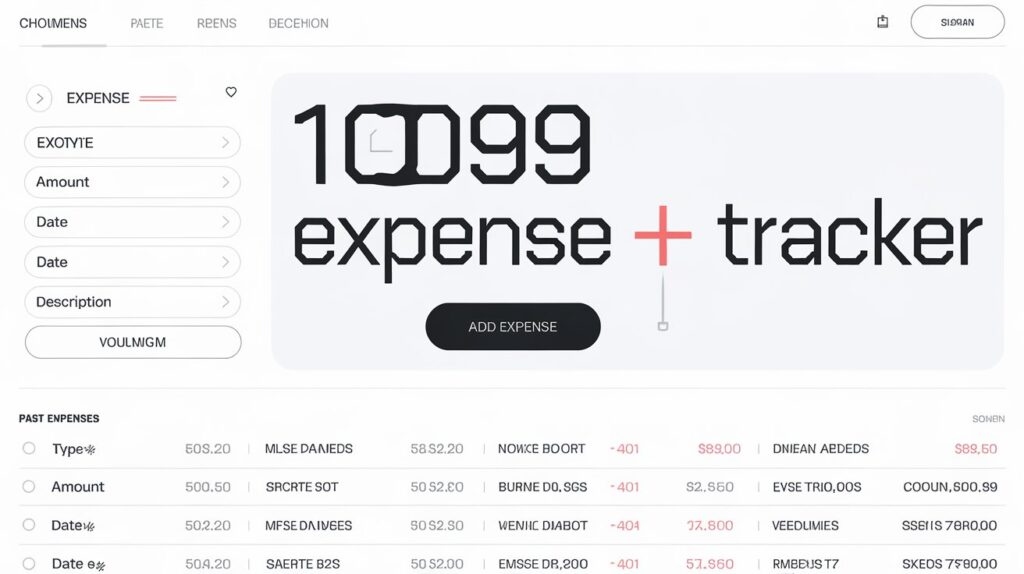
Leveraging Apps for 1099 Expense Tracker
Benefits of Using Expense Tracking Apps
Expense tracking apps can significantly simplify your expense management. These apps automate the process of logging expenses, pulling in data from linked bank accounts and credit cards, thus reducing manual entry and potential errors.
Additionally, many apps offer features like receipt scanning, which allows you to keep digital records of your documents easily.
Top Apps for 1099 Workers (e.g., Keeper, Everlance)
Several apps cater specifically to independent contractors looking to track 1099 expenses effectively:
Keeper: This app automatically scans transactions and categorizes them, making it easier for you to identify potential write-offs.
- Everlance: Known for its mileage tracking feature, it allows you to log business-related trips seamlessly while also tracking expenses.
Features to Consider in Expense Tracking Apps
When selecting an app, ensure it includes the following features:
User-friendly Interface: Helps you navigate the app effortlessly.
- Integration Capabilities: Ability to link with bank accounts and other financial tools.
- Tax Reporting Tools: Automated tax reporting features to simplify year-end filing.
- Customizability: Choose the categories and settings that best fit your business needs.
Best Practices for Monitoring Expenses
Setting a Schedule for Regular Updates
Establish a routine to update your expense tracker regularly. Whether it’s weekly or monthly, consistent updates ensure you maintain an accurate overview of your finances. This practice prevents overlooking expenses and enables you to recognize spending patterns promptly.
Tips for Maintaining Accurate Records
Here are some best practices for maintaining your records:
Keep Receipts Organized: Use digital collection methods, like apps, to photograph and categorize receipts.
- Review Entries Frequently: Avoid backlog by regularly revisiting entries. Ensure that your categories remain relevant and that there are no incorrect entries.
- Separate Personal and Business Transactions: If possible, use a dedicated business bank account to streamline the tracking process.
Importance of Storing Receipts and Documentation
Maintaining receipts and documentation is a vital part of expense tracking. Keep digital or physical copies organized by category. The IRS recommends retaining such records for at least three years. Proper documentation not only makes filing taxes easier but also provides a safety net in case of audits.
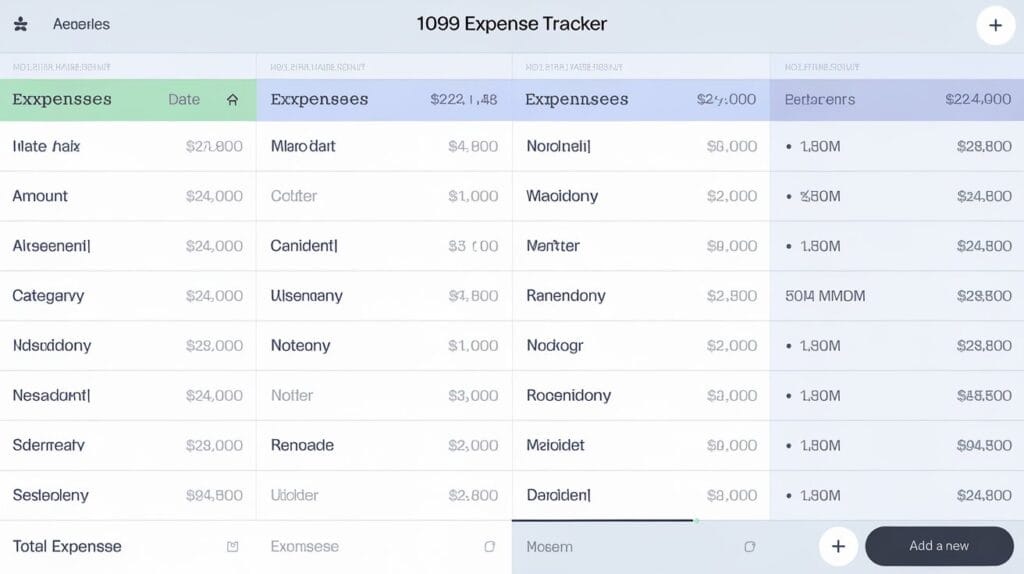
Preparing for Tax Season with Your Tracker
How to Use the Tracker for Tax Deductions
When tax season rolls around, your 1099 expense tracker will be invaluable. Use the information recorded in your tracker to itemize business deductions on your tax return. By having everything organized, you can save time and avoid errors.
Matching Expenses to IRS Schedule C Categories
Familiarize yourself with how your expense categories align with IRS Schedule C categories. Your tracker should list expenses neatly under these categories, allowing for easy transfer when completing your tax forms.
Working with Accountants or Tax Professionals
If your financial situation is complex, consider collaborating with a tax professional. They can provide valuable insights into maximizing deductions and minimizing tax liabilities, ensuring that you’re compliant with IRS requirements.
Conclusion: Simplifying Your Financial Management
Recap of the Benefits of Using an Expense Tracker
Utilizing a 1099 expense tracker simplifies your financial management by providing a clear overview of your spending habits, enhancing your ability to track expenses effectively, and maximizing potential deductions during tax season.
Encouragement to Stay Organized for Financial Success
Staying organized is key to financial success as an independent contractor. Your expense tracker is an essential tool that not only reduces stress during tax season but also supports making informed business decisions throughout the year.
Final Thoughts on Optimizing Business Finances
Investing time in setting up and maintaining a comprehensive 1099 expense tracker will pay dividends. Whether you use a spreadsheet or the best app for tracking 1099 expenses, the goal is clear: simplify your finances, maximize your write-offs, and make informed decisions as you grow your business.
FAQs
How do I track 1099 expenses effectively?
To track 1099 expenses effectively, use a combination of methods: a dedicated expense tracker, a business credit/debit card, and apps that streamline data management. Regularly update your records and categorize your expenses accurately for maximum tax benefits.
What tools help with 1099 expense tracking?
Popular tools include spreadsheet software like Excel and Google Sheets, and specialized apps such as Keeper, Everlance, and Contractor+ that offer features tailored for independent contractors’ financial management needs.
How to organize car expenses for 1099 reporting?
Keep a detailed log of all car-related expenses, separating business use from personal use. Apps like Everlance simplify this process by offering automated mileage tracking and expense categorization.
What if I didn’t track my business expenses?
If you haven’t tracked your business expenses, start compiling whatever information you can. Gather bank statements, credit card statements, and receipts. While you may miss some deductions, you can still claim some expense deductions on your taxes.
How To Keep Track Of Expenses For 1099
Use either digital or physical methods for keeping track of 1099 expenses. Digital tools offer automation and organization, while maintaining physical receipts can also serve as a backup. Regularly categorize and review these expenses to ensure accuracy.
How To Track 1099 Expenses
Tracking 1099 expenses can be achieved through spreadsheets, accounting software, or dedicated expense-tracking apps. All methods emphasize the importance of regularly updating entries and maintaining documentation for accurate tax reporting.
